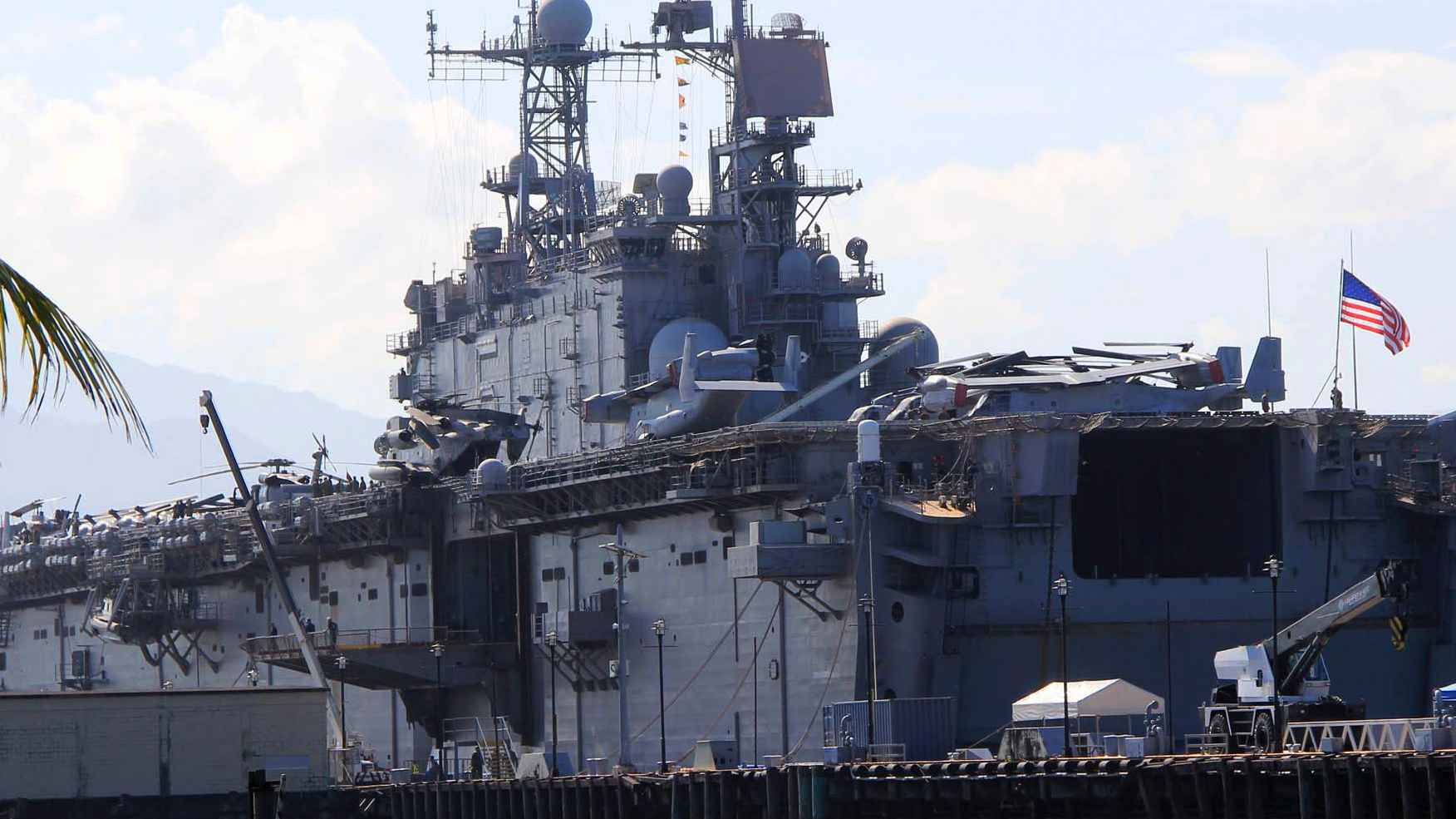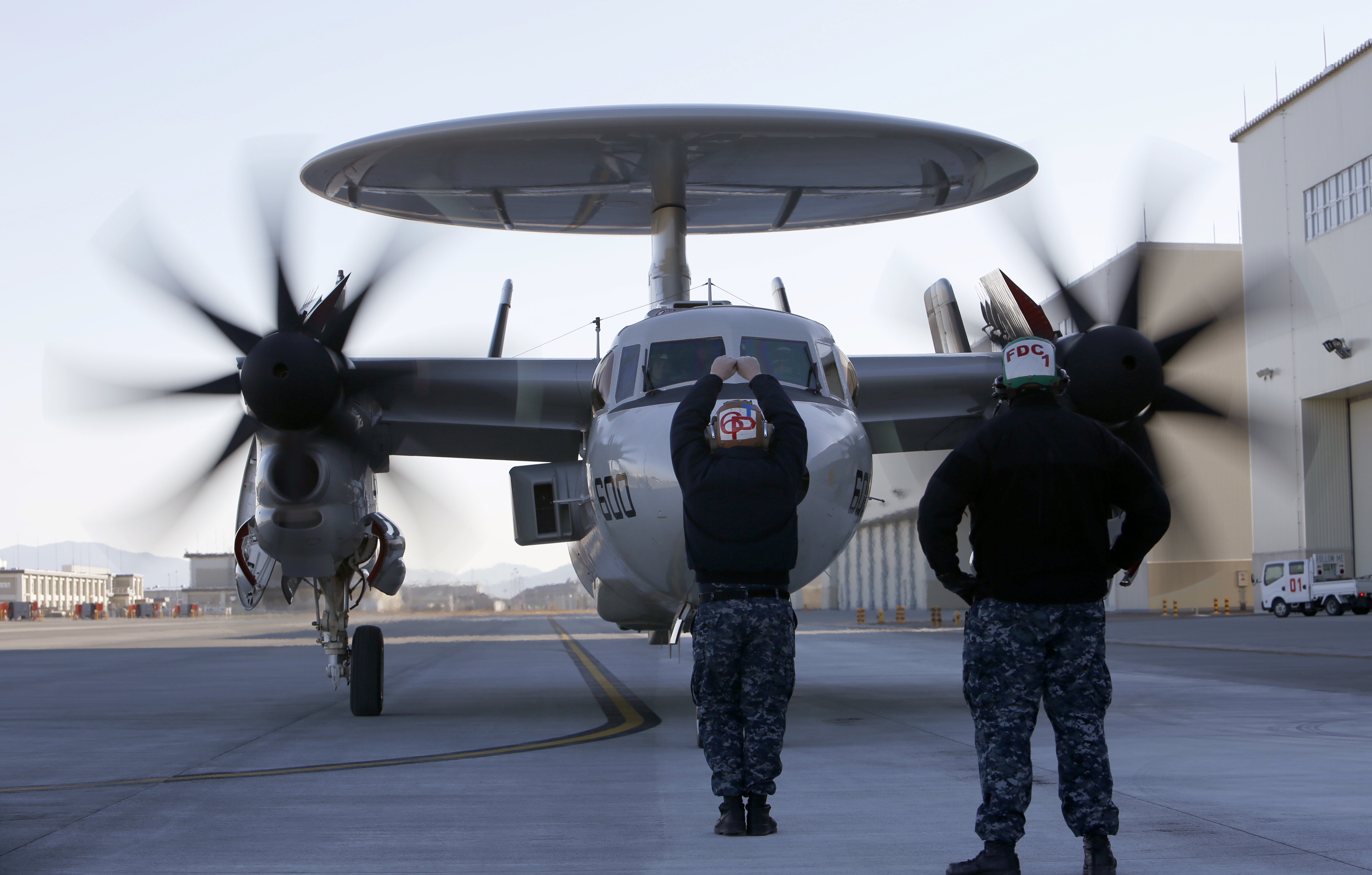
The amphibious assault ship USS Peleliu which took part in the joint military exercise with their Philippine counterpart is docked at the Alava pier, off Subic Bay Freeport zone in Zambales province in northwestern Philippines, October. 13, 2014. /AP
The amphibious assault ship USS Peleliu which took part in the joint military exercise with their Philippine counterpart is docked at the Alava pier, off Subic Bay Freeport zone in Zambales province in northwestern Philippines, October. 13, 2014. /AP
Editor's note: Lan Shunzheng is a research fellow at the Charhar Institute and a member of the Chinese Institute of Command and Control. The article reflects the author's opinions, and not necessarily the views of CGTN.
On June 11, 2020, the U.S. Senate Armed Services Committee (SASC) voted 25-2 to formally pass its version of the 2021 National Defense Authorization Act (NDAA). It is estimated that the U.S. will spend 740.5 billion U.S. dollars on defense in the fiscal year 2021.
More significantly, the Senate's first NDAA initiative, the Pacific Deterrence Initiative (PDI), will receive 6.9 billion U.S. dollars (1.4 billion U.S. dollars in the fiscal year 2021 and 5.5 billion U.S. dollars in the fiscal year 2022) to strengthen U.S. military deployments in the Indo-Pacific region to deter China. Undoubtedly, PDI's funding means that the game between China and the U.S. in Indo-Pacific will be more heated in the future.
As is known to all, since Donald Trump took office, he has taken great power competition as a top national policy, while China and Russia are regarded as major rivals. In order to contain China, the U.S. government has been enthusiastic about the "Indo-Pacific strategy", whose core is to weaken China's influence in the "Asia-Pacific" region, pay close attention to China's increasingly frequent maritime activities, and attract some countries to plan to establish bilateral or multilateral security cooperation mechanisms to contain China's maritime activities.
The contents of the PDI can basically be seen as the implementation of the Indo-Pacific Strategy. "The best way to protect America's security and prosperity in Asia is to maintain a credible balance of forces, but after years of underfunding, America's ability to do so is at risk," the Senate Armed Services Committee said on November 11.
So the establishment of PDI in the NDAA in the fiscal year 2021 is to send a strong signal to China that "the United States is firmly committed to defending its interests in the Indo-Pacific". According to the U.S., the PDI would increase budget transparency and oversight, focus resources on critical military capacity gaps, reassure U.S. Allies and partners and enhance the credibility of U.S. deterrence in the Indo-Pacific region.

A U.S. Navy E-2D Advanced Hawkeye aircraft taxies at Marine Corps Air Station Iwakuni in Yamaguchi Prefecture, western Japan, February. 2, 2017. /AP
A U.S. Navy E-2D Advanced Hawkeye aircraft taxies at Marine Corps Air Station Iwakuni in Yamaguchi Prefecture, western Japan, February. 2, 2017. /AP
This is not the first time America has used something like the Deterrence Initiative. As early as after the 2014 Crimea and eastern Ukraine incidents, the United States and Europe, in addition to imposing sanctions on Russia, proposed the European Deterrence Initiative (EDI) to increase its military presence and capabilities in Eastern Europe.
Specific measures include increasing the U.S. military presence and capabilities in Eastern Europe, funding additional exercises with Allies and partners, upgrading equipment, strengthening infrastructure at U.S. airports, bases and training grounds, and broadly building partner capabilities. These measures underpin the conventional force deterrence posture of America's European Allies.
According to statistics, the program has continued to receive support since its implementation: 985 million U.S. dollars in the fiscal year 2015, 789.3 million U.S. dollars in the fiscal year 2016, 3.4 billion U.S. dollars in the fiscal year 2017, 4.8 billion U.S. dollars in the fiscal year 2018, and 6.5 billion U.S. dollars in the fiscal year 2019.
Although funding details of the PDI grant have not yet been released, the U.S. side said that PDI would be based on EDI, including:
1. To increase the lethality of coalition forces in the Pacific region, including improving active and passive defenses against ballistic and hypersonic missiles for battlefield cruises, bases, locations of operations, and other critical infrastructure.
2. The transition from a large, centralized, unconsolidated infrastructure to a smaller, decentralized, resilient and adaptable infrastructure enhances the design and posture of the Joint Force in the Indo-Pacific region; Increased expeditionary airfield and port capabilities; Strengthen the pre-positioning of forwarding stocks of fuel, ammunition, equipment, and supplies; Improve distributed logistics and maintenance capabilities in the region to ensure the maintenance of logistics in the face of ongoing multi-domain attacks.
3. Strengthen alliances and partnerships to enhance capacity, improve interoperability and information sharing, and support information operations capabilities with a focus on combating pernicious influence.
It is obvious that the above measures are aimed at China's anti-access/regional exclusion capability. China's national anti-access/regional denial strategy is aimed at developing the ability to conduct long-range strikes against forces likely to be deployed in the Western Pacific to limit or control enemy access to land, sea, and air in China's periphery, including the Western Pacific.
The main objective of the PDI is to weaken China's "anti-access/regional denial" capability, as the capability of Chinese ballistic and cruise missiles to strike from the Chinese coast to Guam presents a significant objective obstacle to U.S. involvement in Indo-Pacific affairs.
In addition to the PDI, the U.S. Senate NDAA bill also encourages the U.S. Air Force to establish F-35 operations in the Indo-Pacific. (a) Allocate sufficient resources to give priority to the protection of airbases that may be attacked by new missiles, "particularly from China"; The Pentagon was asked to submit a report on how to mitigate risks from suppliers such as Huawei and ZTE while U.S. troops are stationed overseas.
To sum up, with the successful funding of the Pacific Deterrence Initiative, the situation in the Indo-Pacific region is likely to become more turbulent in the future.
(If you want to contribute and have specific expertise, please contact us at opinions@cgtn.com.)